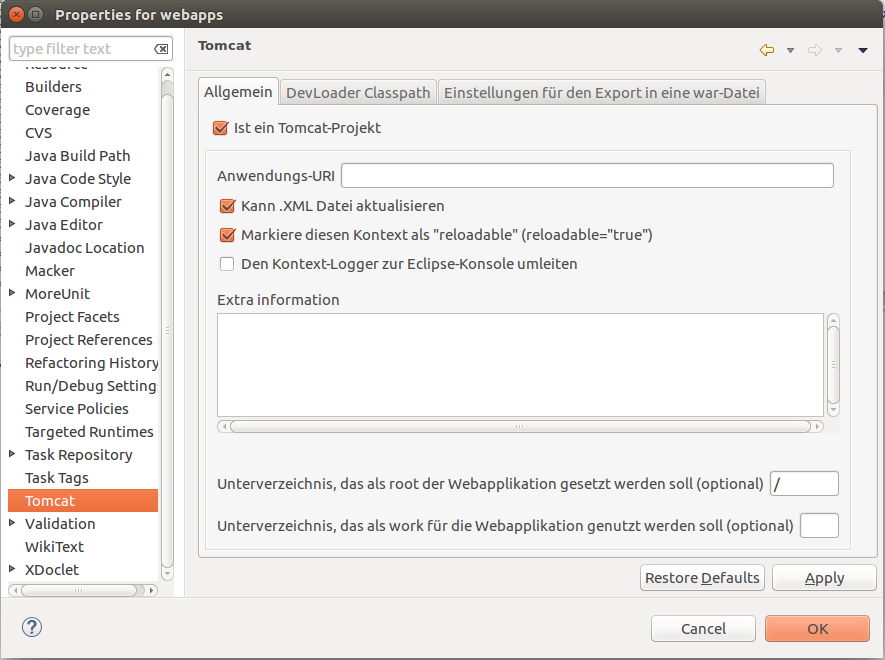

Jrebel tomcat 8 code#
In simple words JRebel loads the code changes in the live running server, server restart is not required at all. JRebel helps developers to be more productive by viewing code changes in real time and maintaining state. JRebel fast tracks Java application development by skipping the time-consuming build and server restart steps in the development process. Many Hyrbis developers are aware of JRebel. Even if one-line code change is done, developer has to wait for around an hour to see the output of the changes.
Jrebel tomcat 8 windows#
Subsequently, restarting the Hybris server to load the changes.īuilding Hybris project usually takes 20 minutes and restarting server on windows machine takes around 25 to 35 minutes.

On the other hand with Hybris, it is always necessary to rebuild the source code in bytecode. Perhaps in a future blog I'll throw together a post about debugging Tomcat within Intellij instead of remotely.As a Hybris developer, I sometimes covet how fast it is possible to see the result of a code change in a running application with interpreted languages like Python, PHP or JavaScript. So now you can debug Liferay/Tomcat remotely in Intellij. For the OSGi modules, you can add the individual jars or source dirs as you need them. So, for example, you may want to add the portal-impl.jar file and link in the source directory to help debug against the core.
Jrebel tomcat 8 download#
Pick Java if you have a local source directory and/or jar file that you want to add or Maven if you want to download the dependency from the Maven repositories. The right side is where additional libraries can be added for debugging without affecting your actual project dependencies.Ĭlick the + sign to add a new library. But once you make a call to code that is not a dependency of your project, the debugger may lose visibility on where you actually are.įortunately there's an easy fix for this. Intellij will let you debug your code or any declared dependencies in your project. You can step through your code, set watches and view object, variable and parameter values. When one of your breakpoints is hit, Intellij will come to the front and the debugger will be front and center. So when I'm ready to debug I have already built and deployed my module and I can set breakpoints in my code and start clicking around in the portal. I'm usually in my own projects needing to understand what is going on in my code or the interaction of my code with the portal. If your project happens to be the matching Liferay source for the portal you're running, you should have all of the source available to start an actual debug session. The debug panel will be opened and the console should report it has connected to Tomcat. To start a debug session, select Debug from the Run menu and select the debug configuration to launch. If debugging locally, keep localhost as the host if debugging on a remote server, use the remote hostname.Ĭlick on OK to save the new configuration. Give the configuration a valid name and change the port number to 8000 (Tomcat defaults to 8000). option to open the Run/Debug Configurations dialog.Ĭlick the + sign in the upper left corner to add a new configuration and choose Remote from the dropdown menu. From the Run menu, choose Edit Configurations. We now need to set up a remote debugging configuration. Right before the "start", insert the word "jpda" and save the file.Ĭall "%EXECUTABLE%" jpda start %CMD_LINE_ARGS%Įxec "$PRGDIR"/"$EXECUTABLE" jpda start gives you a great little startup script that enables remote debugging. On Windows that means copying startup.bat as debug.bat, on all others you copy startup.sh as debug.sh.Įdit your new debug script with your favorite text editor and, practically the last line of the file you'll find the EXECUTABLE start line (will vary based upon your platform). In your tomcat-8.0.32/bin directory, copy the startup script as debug. The downside to this approach is that there is zero support for hot deploy if you change code you have to do a build and deploy it for debugging to work.Ĭonfiguring Tomcat for debugging is really easy, but a quick script copy will make it even easier. Besides I use external Tomcats to test deployments, run demos, etc., so I use them for development also. I'd rather have it run as a separate JVM with it's own memory settings, etc. So I do not like running Tomcat within the IDE, it just feels wrong. I thought I'd share how I do it in case someone else is looking for a brief how-to. So I'm doing more and more development using pure Intellij for Liferay 7 / DXP, even debugging.


 0 kommentar(er)
0 kommentar(er)
